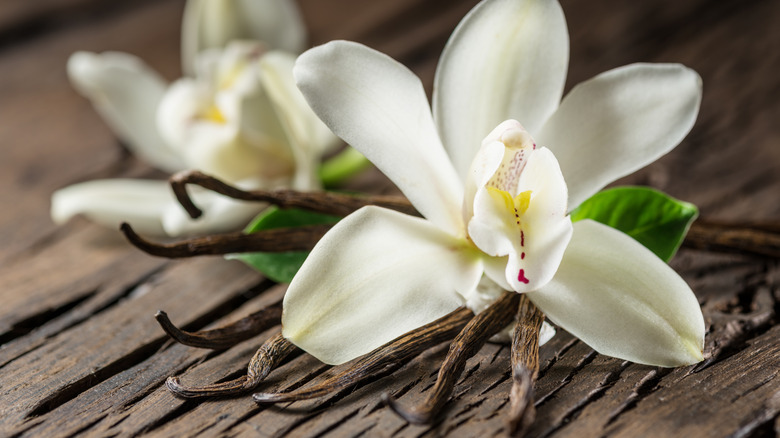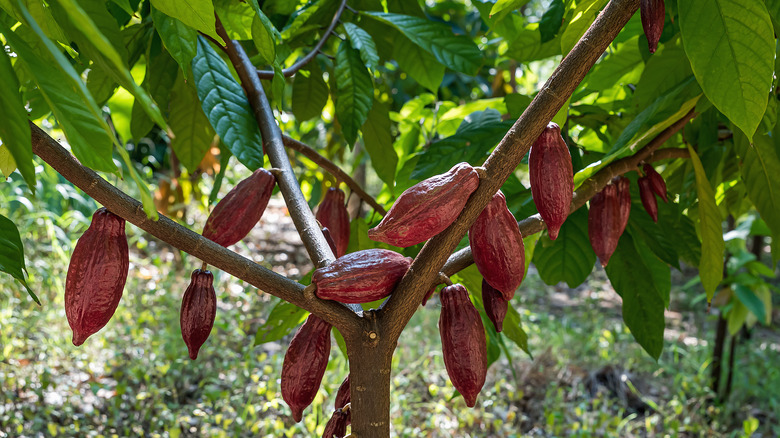What Cacao And Vanilla Have In Common
The Spanish conquistador Hernán Cortés was first introduced to a drink called "chocolatl" by the Aztecs in Mexico in 1519. It was such a novel and potent drink that in 1528, Cortés offered it to the emperor of Spain (via Los Angeles Times). The drink quickly caught on, and by the middle of the 17th century, chocolate's popularity had spread throughout Europe. Soon it would spread throughout the world.
But Cortés brought more than chocolate back to his Spanish homeland after conquering the Aztecs. He also reportedly introduced vanilla to Europe. According to National Geographic, this probably came about because the Aztecs had defeated another indigenous group, the Totonacs, who were known for cultivating vanilla. The Aztecs quickly adopted it into their own cuisine, as the chocolatl the Aztecs shared with Cortés was lightly flavored with vanilla.
Mexico, it should be noted, isn't the only country capable of growing cacao trees and vanilla orchids. But the country does fall within the geographic zone where these two plants flourish.
The geography of sweetness
So what is the common geography shared by both cacao and vanilla? According to Rodelle Kitchen, these plants thrive in the tropics — or specifically, 20 degrees latitude on either side of the equator.
Almost all cacao trees are found within this zone, notes the National Confectioners Association, while nearly three-quarters of them are located within an even more circumscribed area: within 8 degrees of the equator. The nations that lead the way in terms of cocoa production include Brazil, Ecuador, Cameroon, Ghana, The Ivory Coast, Nigeria, and Indonesia. Vanilla, similarly, is grown across a wide swath of the same latitudinal band in the tropics, observes Nielsen Massey, including in countries such as Mexico, Madagascar, and Tahiti.
But, according to Naples Botanical Garden, vanilla originates in Mexico, where it was nurtured by, as mentioned, the Totonacs, but also the Melipona and Euglema bees, the only insects that pollinate the vanilla orchid. Smithsonian Magazine also traces chocolate's origins to Mexico, noting that evidence of theobromine, a chemical from cacao, has been found in pottery that dates to 1500 B.C.
So the next time you're sampling a chocolate board or making these vegan vanilla cupcakes, maybe just say thanks to Mexico.

